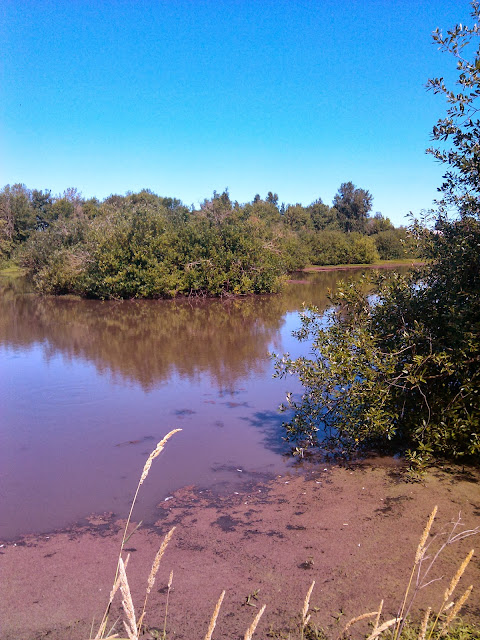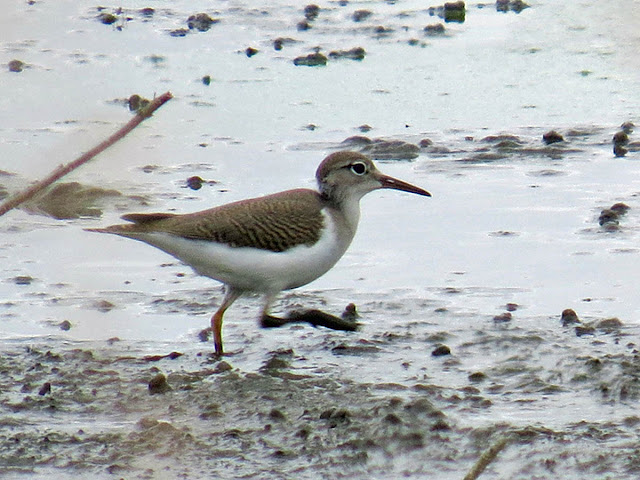The
BirdsEye BirdLog is an application that runs on your smart phone and allows you to create and
submit your
eBird checklists right from the field. Brian Sullivan of eBird tells me that about 20% of all eBird checklists in the US are submitted by BirdLog and this number is rising rapidly.
I previewed this amazing technology when it first came out in March 2012:
BirdsEye Bird Log: Killer app for eBirders.
eBird has their own
best practices for BirdLog but I wanted to write my own best practices based on my experience over the last year or so. I'm using an Android phone; the fine details may be slightly different with the Apple iPhone. I do recommend looking at eBird's pointers, though.
Frankly, data coverage for cell phones is spotty in Oregon. I am using Cricket and they use the Sprint network for 3G data. This means that I have web access to the BirdLog phone application at home, up and down the I-5 corridor, and in major towns in the Willamette Valley and along the coast. When I am birding in areas with web access for the BirdLog app on my Android phone, it works quite well. For most of my countryside and forest birding, however, I do not have web access with my phone, and often not even roaming voice or text messaging. There is no web service in the Coast Range, Cascades, and most of the eastern two-thirds of the state. Thus I use the "Create offline checklist" feature of BirdLog on over 50% of my birding trips.
The main differences between the way BirdLog works with the online checklist and the offline checklist are primarily as follows. The offline checklist uses the entire default North American checklist rather than the local list of expected species for that time of year and county. It therefore doesn't know which birds are rare in your area, and sometimes requests confirmation for every species (a bug in the program of (only?) Android phones (has this been fixed in the latest update I just downloaded?). The offline checklist uses the sometimes inaccurate GPS alone to locate your position, and not the seemingly more accurate interactive map of the online checklist. Thus you can't locate your checklist on a hotspot, for instance, until you edit the location at home later. You can save your offline checklists to your phone, but can't submit them to eBird until you are back in the web coverage range again. These differences, however, don't significantly change the way I use BirdLog.
Start the application
When I first pull in to my birding location, before I even get out of the car, I immediately start up a new BirdLog checklist. Because GPS can be off, I always type in a descriptive location in addition to the longitude and latitude coordinates. I'll check, move if necessary, and rename the location later from within eBird, when I get home, using the "edit location/choose new location from a map" option.
Record species
As I bird, I record the new species I detect. This can get distracting, so I tend to bird slower than I used to--a good thing, as I detect more species! But don't miss birds because you have your nose in your phone! After I step out of the car I record what I can see and hear immediately, then only update the species list every 3 species (three being the number of things I can remember without forgetting...).
There are several ways to record species. You can scroll through the list. This is handy to make sure you haven't forgotten something. But if you are working offline you will have the entire North American list, so better only when you have the local list that comes with web access and cell phone coverage. BirdLog uses the bander's 4-letter code (KILL for Killdeer, AMRO for American Robin, WSJA for Western Scrub-Jay, etc.). But also, BirdLog will auto complete after the first 3 letters. So BAR will bring up Barn Owl, Barred Owl, and Barn Swallow for you to choose from. THR will bring up the thrushes and thrashers [
Useful tip: if you have web access and are working online, and you see a bird that has a look-alike, say, one of the brown thrushes, typing in THRU will bring up all the local thrushes,
but the most common will be listed first.]
Subspecies can be recorded too. MOF will bring up moffitti/maxima Canada Goose. AUD will bring up Yellow-rumped (Audubon's) Warbler. For Red-shafted x Yellow-shafted Flicker type FLI and hold your finger down on the drop down list to bring up further options.
Record numbers
I don't record numbers as I see them. Rather, I wait until I am returning to the car to make estimates. This is done by only looking at the species recorded, so I don't have to scroll through birds I haven't seen. When back to the car I check the numbers one final time.
Comments
For unusual birds I add COMMENTS to the field when I see them. One great tool is to be able to record the exact GPS coordinates in the comments field. This is newly computed and different from the initial checklist coordinates that were computed when you first started the checklist. This is a great way to give directions to a rare bird! My phone has both Swype and speech-to-text that work very well rather than typing to add comments in the field.
Time and Distance
I estimate how far I walked. Then I hit CALCULATE to record the time, which keeps track of my birding time from when I started the checklist. Since I always start the checklist when I arrive at a birding location, the time is accurate.
Saving
I SAVE the checklist, but don't SUBMIT--even if I have web access. Invariably, as I drive away I'll see something in the parking lot that should be added to the list (or remember a bird I left off). So I'll wait until I am away from the birding area and back in cell coverage submit the list.
Since BirdLog is so easy to use, I create numerous checklists as I travel through the woods or country, often stopping at good looking habitat and doing a 5-15 minute Stationary point count.
More checklists. Checklists right from the field with no copying notes into eBird later. BirdLog is an eBirder's dream.





